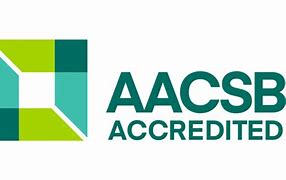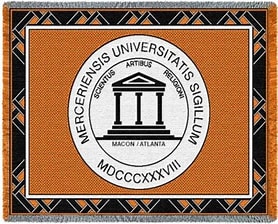|
Leadership and Spirituality in Business: The
Contributions of Eastern Philosophies
(one space)
Dr. Stewart L.
Tubbs, Eastern Michigan University, MI
(Bold: 10pt: Title Case: Times New Roman)
Dr. Pradeep Chowdhry, Eastern Michigan University, MI
(Bold: 10pt: Title Case: Times New Roman)
(two spaces)
ABSTRACT
(Title: 10pt: Centered: Captial: Bold)
(one space)
(Text: 10pt: Roman Times font: Justified: Indentation:
0.5 inches)
There is a substantial body
of research evidence regarding the importance of leadership and leadership
development to organizational success, Avolio and Luthans (2006),Charan, Drotter
and Noel (2001), Fullmer and Goldsmith (2001), Goffee and Jones (2006),
Goldsmith (2007), McCall and Hollenbeck (2002), McCauley, Moxley and Van Velsor
(1998), Reardon (2007), Viceri and Fulmer (1997), Wagner and Harter (2006), and
White (2007). However, there remains an ongoing controversy about what types of
leadership styles and competencies are the most effective in any given
situation. In this paper leadership is defined as, “Influencing others to
accomplish organizational goals,” (Tubbs, 2007). Based on the model presented in
this paper, the rationale is advanced that the leadership competencies on the
outer wedges of the model are where leadership development efforts should be
focused (Tubbs and Schulz, 2006). This paper focuses on exploring the
contributions of Eastern philosophies (specifically from India) on leadership
effectiveness.
(one space)
Keywords: Leadership,
Spirituality, Philosophies
(one space)
INTRODUCTION
(Title:
10pt: Centered: Capital: Bold)
(one space)
Approximately $50
billion a year is spent on Leadership Development (Raelin (2004). Yet, one of
the most frequently asked questions of leadership scholars is whether leadership
can, in fact, be taught and learned. The answer seems to be a qualified yes. In
other words, some aspects of leadership are more likely to be learnable and
others are less so. For the purposes of this paper, leadership is defined as,
“Influencing others to accomplish organizational goals,” Tubbs, (2007).
Leadership is often discussed in terms of competencies, (Boyatsis (1982),
Goleman, Boyatsis and McKee (2002), Whetton and Cameron, (2002). Competency is a
term that describes the characteristics that lead to success on a job or at a
task, Boyatsis (1982). Competencies can be described by the acronym KSA
knowledge, skills and abilities. The model in Appendix A shows that leadership
competencies can be represented by three concentric circles. These three circles
describe three distinct aspects of leadership. The innermost circle includes an
individual’s Core Personality. The second circle includes an individual’s
values. The outermost circle represents an individual’s leadership behaviors and
skills, (i.e., competencies). The authors contend that (1) the attributes in the
innermost circle are more or less fixed at a young age and are unlikely to be
changed as a result of leadership development efforts; (2) that a person’s
values are somewhat more malleable than personality characteristics, yet more
stable and perhaps more resistant to change than behaviors; and (3) that the
behaviors represented in the outermost circle are the most likely to be changed
through leadership development efforts. Each of these circles is discussed
below.
(one space)
Personality
(Sub-Title: 10pt: Aligned Left: Title Case: Bold)
Personality represents the
accumulation of enduring physical and mental attributes that provide an
individual with his or her identity. These attributes result from the
interaction of heredity and environmental factors. Determinates of personality
can be grouped in four broad categories: hereditary, cultural, familial and
social interactions. Each of these perspectives suggest that an individual’s
personality is a relatively enduring characteristic formed early in their life.
Genetic specialists argue that components of an individual’s personality are in
large part heredity (Holden, 1988). Personality is also affected by an
individual’s culture because it directs what an individual will learn and
formats the context in which behavior is interpreted (Hofstede, 1984). While
the culture dictates and restricts what can be taught, a person’s family plays a
key role in the constitution of an individual’s personality development. The
overall social context created by parents is vital to personality development
(Levinson, 1978). Besides family influences on personality, social interactions
in the environment effect personality by dictating what is acceptable and
customary in the social group.
(one space)
Values
(Sub-Title: 10pt: Aligned
Left: Title Case: Bold)
While personality is
certainly a strong influence on behavior, an individual’s values also strongly
shape peoples’ behaviors, Rokeach (1965). Witness the recent U.S. presidential
election. Exit polls showed that, more than any other factor, “moral values”
shaped their choice of candidate. Similarly, the scandals in American
corporations have resulted in a loud outcry for an increased emphasis on
business ethics in American business schools. The strong value system is that
individuals and business that perform in ethical ways are much more likely to
succeed in the long run. Spirituality is one specific dimension of values.
Spirituality in business has received increasing attention over the last decade.
This is due to organizational restructuring, baby boomers seeking more meaning
in their lives and the current change models not being able to adequately deal
with a rapidly evolving business environment. (Chopra, 1994).
(One space)
CONCLUSION
(Title: 10pt: Centered:
Capital: Bold)
(One
space)
The importance of
leadership and leadership development has been well documented. The present
exploratory study will investigate one aspect of leadership, namely, the
spirituality quotient, to determine its possible impact on leadership
competencies and subsequent organizational effectiveness. This is a previously
unexplored research agenda.
END NOTES (End Notes should be numbered
manually)
(Text: 8pt: Times
font)
1.
Avolio, B and F. Luthans (2006). The
high impact leader. New York:McGraw-Hill.
2.
Charan, R., S. Drotter and J. Noel
(2001). The leadership pipeline.
(One space)
REFERENCES (10pt: Centered: Bold:
Capital)
(One space)
(Text: 8pt: Times
font)
The references should be listed alphabetically.
Ashmos, D.P., & Duchon, D. (2000).
Spirituality at work, Journal of Management Inquiry, 9, 134-146.
Avolio, B and F. Luthans (2006). The
high impact leader. New York:McGraw-Hill.
Bergman, H., K. Hurson and D. Russ-Eft
(1999). Everyone a Leader. New York: John Wiley & Sons.
Boyatsis, R. (1982). The competent
manager: A model for effective performance. New York: Wiley & Sons.
Bueno, C. and S. Tubbs (2004).
Identifying global leadership competencies: An exploratory study. The Journal
of American Academy of Business, Cambridge, September, 2004, 80-87.
Charan, R., S. Drotter and J. Noel
(2001). The leadership pipeline.
Chin, C., Gu, J. and S. Tubbs (2001).
Developing global leadership competencies. The Journal of Leadership Studies, 7
(3), 20-31.
Chopra, D. (1994). The seven spiritual
laws of success. San Rafael, Ca: Amber-Allen Publishing.
Covey, S. Seven Habits of Highly
Effective People, St Martin’s Press, NJ., 1992
Deal, T., and A. Kennedy (1982).
Corporate cultures. Reading, Mass.: Addison-Wesley.
Ellemers, N., D. Gilder, and S. Haslam
(2004), “Motivating individuals and groups at work: A social identity
perspective on leadership and group performance,” Academy of Management Review,
( 29), 459-478.
Engardio, P. (2006). “Karma
Capitalism,” Business Week (2006), , Oct 30, 84-91
Friedman, T. L., The World is Flat,
Farrar, Strauss and Giroux, NY, 2005
Fulmer, R. and M. Goldsmith (2001). The
leadership investment. New York: AMACOM.
Gibbins, Paul. Spirituality at Work: A
Pre-theoretical Overview (M.Sc. dissertation, University of London, 2000) II
14-15.
Gibson, C. and J. Birkinshaw (2004), “The antecedents, consequences, and
mediating role of organizational ambidexterity,” Academy of Management Journal,
(47), 209-226.
|
 Scholarly Journals & Academic Conferences
Scholarly Journals & Academic Conferences








.gif)